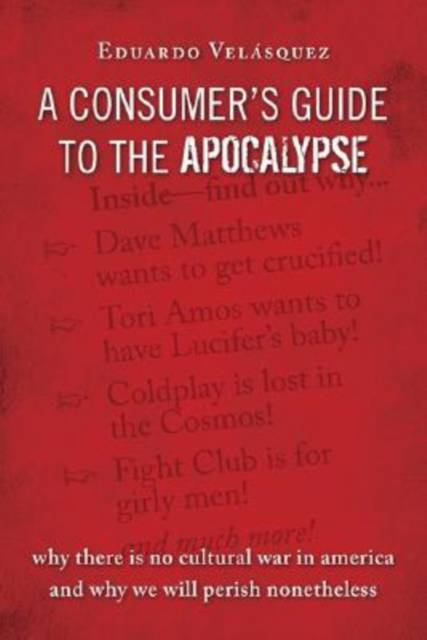
- Afhalen na 1 uur in een winkel met voorraad
- Gratis thuislevering in België vanaf € 30
- Ruim aanbod met 7 miljoen producten
- Afhalen na 1 uur in een winkel met voorraad
- Gratis thuislevering in België vanaf € 30
- Ruim aanbod met 7 miljoen producten
Zoeken
A Consumer's Guide to the Apocalypse
Why There Is No Cultural War in America and Why We Will Perish Nonetheless
Eduardo Velasquez
€ 33,45
+ 66 punten
Omschrijving
What accounts for the apocalyptic angst that is now so clearly present among Americans who do not subscribe to any religious orthodoxy? Why do so many popular television shows, films, and music nourish themselves on this very angst? And why do so many artists--from Coldplay to Tori Amos to Tom Wolfe--feel compelled to give it expression? It is tempting to say that America's fears and anxieties are understandable in the light of 9/11, the ongoing War on Terror, nuclear proliferation, and the seemingly limitless capacity of science to continually challenge our conceptions of the universe and ourselves. Perhaps, too, American culture remains so permeated by Protestant Christianity that even avowed skeptics cannot pry themselves from its grip. In A Consumer's Guide to the Apocalypse, Eduardo Velásquez argues that these answers are too pat. Velásquez's astonishing thesis is that when we peer into contemporary artists' creative depiction of our sensibilities we discover that the antagonisms that fuel the current cultural wars stem from the same source. Enthusiastic religions and dogmatic science, the flourishing of scientific reason and the fascination with mystical darkness, cultural triumphalists and multicultural ideologues are all sustained by the same thing: a willful commitment to the basic tenets of the Enlightenment. Velásquez makes his point with insightful readings of the music of Coldplay, Tori Amos, and Dave Matthews and the fiction of Michael Frayn's Copenhagen, Chuck Palahniuk's Fight Club, and Tom Wolfe's I Am Charlotte Simmons. Written with grace and humor, and directed toward the lay reader, A Consumer's Guide to the Apocalypse is a tour de force of cultural analysis.
Specificaties
Betrokkenen
- Auteur(s):
- Uitgeverij:
Inhoud
- Aantal bladzijden:
- 200
- Taal:
- Engels
- Reeks:
Eigenschappen
- Productcode (EAN):
- 9781933859286
- Verschijningsdatum:
- 1/07/2007
- Uitvoering:
- Hardcover
- Formaat:
- Genaaid
- Afmetingen:
- 139 mm x 196 mm
- Gewicht:
- 317 g

Alleen bij Standaard Boekhandel
+ 66 punten op je klantenkaart van Standaard Boekhandel
Beoordelingen
We publiceren alleen reviews die voldoen aan de voorwaarden voor reviews. Bekijk onze voorwaarden voor reviews.











